ITALIAN HAND GESTURES EXPLAINED INCLUDED THE NEW PINCHED FINGERS EMOJI!
Ah, Italian hand gestures are Italy’s most famous signature (hand signature in every sense). Let’s see the best ones!
LATEST UPDATE – JULY 2022
Hold on to your horses! A new pinched fingers emoji is included, and it has a strictly Italian meaning! Everyone is tagging me to tell me, so hey, could I have been left out of this article?! Certainly not!
Keep reading to see me using the now famous Italian pinched fingers emoji… way before they invented it online, including what it means!
Italians are well famous for their hand gestures. We can go on and on talking only by using our hands and perfectly understanding each other. It’s our “Trademark.”
We don’t even realize it until someone starts emulating us (see my boyfriend when I talk to my parents on the phone).
Let’s say you are on vacation in Italy, Sardinia, Tuscany, Rome…whatever! And you meet an Italian person. Yes, that strange creature, half-human, and half cartoon, who would probably be able to send you to jail for eating a pineapple pizza or drinking a cappuccino after midday (but I’m digressing!)…
So let’s get started with our Italian hand gestures crash course. After reading this article, you will finally understand what happens when two Italians are around. No more secret codes, I promise! You will even be able to join the conversation and add some very deep meaning to it
The Humanistic hand
The story starts at the end of the Middle Ages in the Italian peninsula, when the Florentine intelligentsia started the Renaissance movement. Their aim was to put Man at the center of preoccupations : to know God’s creation better, they thought that they needed to know more about Man himself. Humanists turned their back on what they called the “dark Middle Ages” and dove into to the works of classical authors in order to revive the cultural legacy and moral philosophy of classical antiquity. They wanted the modern men to be free and civilized, literate and curious… Naturally, they needed an appropriate, elegant, fast and legible new writing style to spread their new ideas.
For that reason, the Humanistic hand is considered to be the result of a deliberate cultural choice, rather than of a natural evolution of the medieval writing styles. The Humanist scribes found the inspiration for their small letters in the old carolingian minuscule that they believed was the ancient roman script, and found their capitals engraved in antique stones such as the Trajan column.
First, Poggio Bracciolini created a formal book hand very similar to today’s Foundational hand, then Niccolò Niccoli created a cursive version of this humanistic hand – the ‘antica corsiva’ – which became the official script for briefs by papal chancery scribes in the 1430’s. Several generations of Vatican scribes perfected it, making it even more cursive and fluid, and their work spread the Cancellaresca throughout the catholic world.
Italy was becoming very prosperous at the time. Trade was an important part of the economic development of cities like Venice ; italian banks were becoming important institutions (the Medici family in Florence founded the biggest bank in Europe) ; people had access to knowledge like never before ; Italian artists and scientists experimented and made wonderful discoveries… And all these people and institutions were ready to start using the new, faster and easier writing style. Good writing teachers were extremely popular, and the development of the printing press made it possible for them to spread their knowledge in a new way.
Conclusion
As we said at the beginning, there are hundreds of Italian gestures used in Italy on a daily basis, but if you manage to learn the (good) ones shown in this article, you’ll be well on your way. ![]()
The good thing about gestures is that you don’t really need to be fluent in Italian to use them. They’re a parallel (and often alternative) way to say things in a colloquial manner. Hand gestures and facial expressions will improve your ability to communicate effectively with native Italian speakers. After all, a journey into the language is not complete without learning about the culture as well! So, keep it up and before you know it, you’ll find yourself moving your hands like never before and speaking like an Italian!
Gesticulate Like a Real Italian with ItalianPod101
Body gestures in learning Italian are essential, and body language is a crucial part of the way Italians communicate. But there’s a bright side: It’s so fun to learn it! Here at ItalianPod101.com, we’ll guide you through every aspect of the Italian language, from grammar to culture, from verbs to onomatopoeia. And with our courses and learning apps, you’ll behave, talk, and gesticulate like an Italian in no time!
There’s so much more to say about Italian hand gestures alone, that we at ItalianPod101.com have decided to dedicate more articles and guides to the topic, completely free. Be sure to keep an eye out!
Before you go, let us know which of these Italian gestures is your favorite by dropping a comment below. Also, are there any other Italian body language signals you want us to cover? We look forward to hearing from you! Start with a bonus, and download your FREE cheat sheet – How to Improve Your Italian Skills! (Logged-In Member Only)
Seven Italian Hand Gestures Worth Knowing Posted by Malachi Rempen on Jul 13, 2015 in Archived Posts
Many years ago, back when my wife was just my girlfriend and I was visiting her family for the first time in rural Italy, I spoke about as much Italian as a plate of spaghetti Bolognese. Unfortunately, her family spoke as much English as a chicken pot pie, so there were plenty of hilarious misunderstandings. I tried my best with what little Italian I could muster (mostly just Spanish accented hopefully in Italian) and managed fairly well with her parents. Her grandparents, however, didn’t even speak Italian. They spoke Veneto, the local dialect. Adorably, they would ask my then-girlfriend how to say things in Italian—they assumed that I didn’t speak Veneto, but surely I spoke Italian, or what would I be doing there? Needless to say, they might as well have been speaking Latin.
Anyway, at one point I was left alone with her grandfather. The both of us at a lack of words, he looked at me, grinned, and did this: I had no idea what to make of it. Did he have a stomachache? Was he making a comment on my height? Did he want to be chopped in half? He assumed Italian gestures were universal—sadly, I remained utterly baffled. I decided to try what I was fairly sure was a universal sign, and smiled and nodded. Luckily, this turned out to be exactly the correct response.
I had no idea what to make of it. Did he have a stomachache? Was he making a comment on my height? Did he want to be chopped in half? He assumed Italian gestures were universal—sadly, I remained utterly baffled. I decided to try what I was fairly sure was a universal sign, and smiled and nodded. Luckily, this turned out to be exactly the correct response.
As you probably know, Italian is not only spoken with your mouth; it is also spoken with your hands. There are thousands of gestures ranging from subtle to obvious (many of them involving the depiction of or referral to genitals – thank you, Italian machismo), but there are a few that are fairly commonplace, and worth knowing, if you’re going to be learning Italian. I learned what my wife’s grandfather was trying to tell me, and many more, and now I will pass them on to you, dear reader.
Seven Italian Gestures Worth Knowing
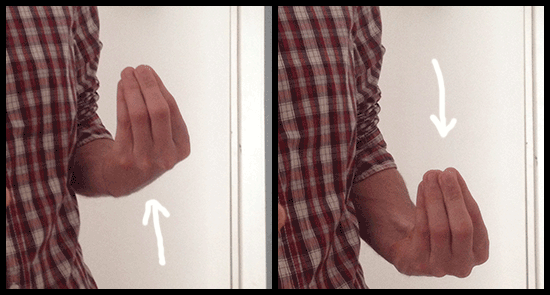 The classic, stereotypical Italian hand signal. I used to think it meant “good, great” or was simply a mobster’s way of pairing his mustachioed frown with a gesture. WRONG. This gesture must be paired with a “WTF” look, as that’s exactly what it means: “what the farfalla are you talking about?”
The classic, stereotypical Italian hand signal. I used to think it meant “good, great” or was simply a mobster’s way of pairing his mustachioed frown with a gesture. WRONG. This gesture must be paired with a “WTF” look, as that’s exactly what it means: “what the farfalla are you talking about?”
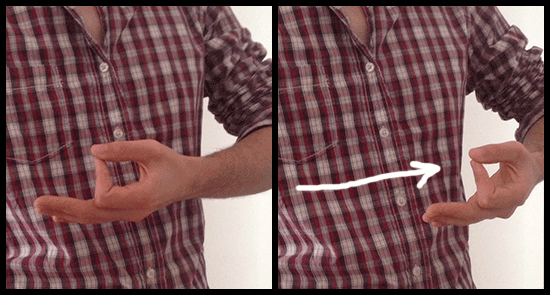 Not “okay,” not “good,” but perfetto. Things went off without a snag, everything’s lovely, this pasta pomodoro is just heavenly. Perfect.
Not “okay,” not “good,” but perfetto. Things went off without a snag, everything’s lovely, this pasta pomodoro is just heavenly. Perfect.
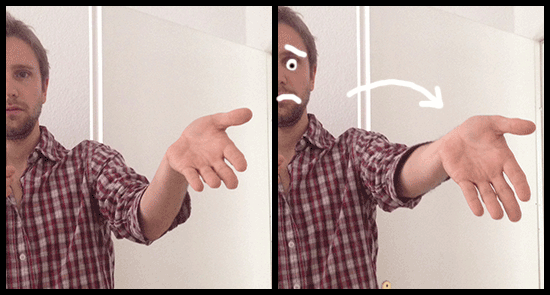 Used on someone who thinks they’re pretty big, but is in fact an oaf. “Look at this guy! Look at you! What an idiot!” Can be used as a proper insult, or all in good fun. Like sarcasm, Italian hand gestures used strategically in different contexts can have subtly different meanings.
Used on someone who thinks they’re pretty big, but is in fact an oaf. “Look at this guy! Look at you! What an idiot!” Can be used as a proper insult, or all in good fun. Like sarcasm, Italian hand gestures used strategically in different contexts can have subtly different meanings.
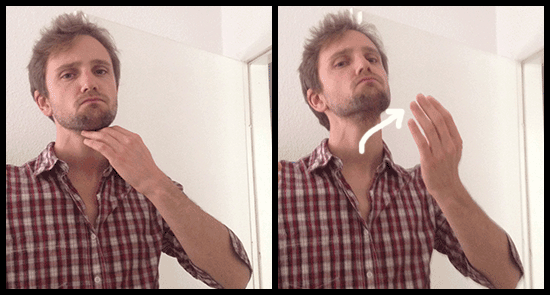 Looks like an insult, and I suppose it could be taken as one, but technically it isn’t. Simply means, “I don’t care.” Fuhgettaboutit.
Looks like an insult, and I suppose it could be taken as one, but technically it isn’t. Simply means, “I don’t care.” Fuhgettaboutit.
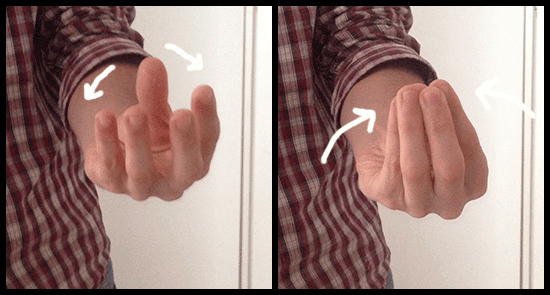 This one is fairly graphic when you know what it’s referring to. It means “scared,” and can be used either as an admission of fear (“I’m scared/nervous!”) or as a taunt (“scared? Huh? Are ya?”). What I’ve been told it literally symbolizes is the puckering of your…er, posterior.
This one is fairly graphic when you know what it’s referring to. It means “scared,” and can be used either as an admission of fear (“I’m scared/nervous!”) or as a taunt (“scared? Huh? Are ya?”). What I’ve been told it literally symbolizes is the puckering of your…er, posterior.
Finally, we get to Nonno (grandpa)’s mysterious signal: “hungry?” As you can see, smiling and nodding is the only correct nonverbal response. And once you’ve finished what was no doubt a delicioso meal:
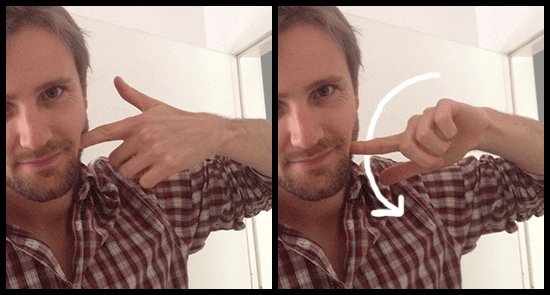 “Tasty!”
“Tasty!”
Anyone got any other Italian hand gestures I might have missed? What about other languages that rely heavily on gestures and the like?
All photos provided by the author.
The copper engraving revolution
Throughout the history of writing, variations were caused by a series of factors. Speed, for example, is an important one : when speed was not important, the writing style would end up being formal and decorative. Overall, the hand would always be adjusted to fit the needs of those writing it and the tools that they would use. But in the case of the Italian Hand’s evolution, the printing process also had something to do with how the script evolved.
The first writing copy-books were all printed from wood blocks. The method gave acceptable results, but writing masters knew that they couldn’t rely on the block cutter to reproduce finer details. Their designs had to stay relatively simple, and their copy-books only conveyed the basic principles of the various writing styles represented.
But from 1569, when engravers were finally able to reproduce good letterforms on copper-plates, the copy-books themselves began to change.
Cresci’s popular new direction in writing seemed ideally suited for reproduction by the graver. The results were stunning : the subtle contrasts of the printed letterforms were enhanced by the new method of engraving, it gave a crisper image and allowed to reproduce small examples of the script as well as elaborate flourishings known as ‘command of hand’. From then on, writing-masters wouldn’t have to just focus on giving basic instructions on writing, they would be able to design and publish the most elaborate artworks… And so they did.
What does the Italian 🤌 mean?
If you see someone making the pinched fingers gesture in Italy, they’re likely asking you what you want. This is a common question Italians will ask each other, so if you find yourself in a similar situation, be sure to reply with what you’re looking for.
The “How Italians do things” meme is a popular way of expressing confusion or disbelief. The gesture is made by bunching up your fingers with your finger tips pointing upwards. This is a classic Italian gesture that is sure to get a laugh.
Why do Italians make that hand gesture
The iconic Italian hand gestures began to appear as several peoples that spoke no common language came to the peninsula and the Italians needed to improvise in order to communicate. The rest is history.
The most common Italian hand gesture is known as the “pinched finger” gesture, or as its known in Italian, il gesto del carciofo (lit the artichoke gesture) or mano a borsa (lit purse hand) To make this gesture, touch your fingers and thumb together, and shake your hand in front of your face.
Bonus Gesture: The Horns
The horns gesture, the mano cornuta, is not just a gesture but a wider part of Italian culture. Italians fare le corna (literally, «to make the horns») to ward off the evil eye, the malocchio, in situations involving bad luck (or the potential for it), or someone insulting your friends or family.
You can forms the , by raising the index and pinky finger with the rest of the hand formed into the fist, with the hand pointed downwards.
Make sure the hand points downwards, because pointing the hand upwards or towards someone has a completely different meaning: it invokes the evil eye or implies that the other person’s partner is cheating on them (the corna also symbolises the horns (cornuti) of a cuckhold). However, the gesture can also be used in traffic jams and simply to tell someone to f-ck off.

You can also find the horns gesture as a lucky charm, usually made out of gold, silver, or blood coral because of their supposed magic properties.
A cruder way of warding off the evil eye is grabbing the testicles (for men) or the breast for women which stems from the association with the evil eye with infertility. Though this version is used, Italians do consider it a bit coarse.
Find out the 7 RULES to SURVIVE in Italy!
1. The KISSES rule
It does not matter how tired, nervous or angry you are. It does not matter how much you know the person in front of you. The only thing that really matter is to greet them in a proper way: that is, kissing them on the cheeks!
So, besides the verbal greetings that we all know (for example: hello, good morning, good evening, and so on), Italians say “hi” and “bye” exchanging cheek kisses. In specific, two or three kisses, depending on the country’s area you are in.
The ritual has a very precise order: you must start from the left cheek! You start slightly turning your head on the right, in order to offer your left cheek and softly touch the other person’s one. Then, you do the same on the other side.
2.The SPAGHETTI rule
Not everyone knows that, when Italians cook spaghetti, they never break them before putting them in the hot water! It is forbidden!
Spaghetti must be cooked just the way they are: intact! Then, they must be eaten rolling them up with a fork. And if you cannot eat them without breaking them… you can still have a shorter kind of pasta, like penne!
3. The TOOTH rule
This rule is deeply connected to the previous one. Because, when Italians cook pasta, another important matter is the timing: regardless the kind of pasta, you must not let it become “soft”, by cooking it too much.
Pasta must be “al dente” (literally “to the tooth”): meaning, not too hard to break your teeth, but still hard enough to chew it!
Do you like the t-shirts we wear in the video? You can find them in our online shop: LearnAmo Collection!
4. The SOCKS rule
It does not matter if you live in a big city where nobody cares about the way in which you dress. There is a line that can never be crossed: wearing socks AND sandals together!
Italians are famous for their passion for fashion, we all know that. That is why socks with sandals are simply unacceptable for us. Actually, according to our stereotypes, it is a combination that only German tourists would wear! Do you confirm or deny this?
5. The DELAY rule
Every true Italian is always late.
So, when you hang out with your Italian friends, do not get offended if they show up half an hour late: it is normal! When an Italian gives you an appointment, the best thing you can do is to calculate 20 or 30 minutes of delay: in this way, you will know the actual hour you will meet!
6. The FISH and CHEESE rule
As you can see, many of these rules are connected to food: but now we move from pasta to fish. There are many countries where you can eat fish together with cheese, but in Italy this combination is unacceptable. As a matter of fact, you would never find it in a restaurant menù in Italy!
In terms of terror, it can rival the pineapple pizza…
7. The GIFTS rule
It is true: we Italians have many weird rules, but we are also very generous. In fact, for every party or special event we go to (birthdays, anniversaries, graduations and so on…) we always bring a gift.
Moreover: when someone invites us to come over their house, we never show up empty handed! That would be extremely rude! In this case we usually bring a bottle of wine, some sweets or flowers.
Don’t miss also our lesson about 10 verbs for traveling to Italy!
Finger Purse
The “finger purse” is a widely recognized Italian hand gesture. It is often used with a facial expression of frustration, irritation, or bewilderment.
This hand gesture can convey the meaning of “Ma che vuoi?” (“But what do you want?”), “Ma che stai dicendo?” (“But what are you saying?”), or “Ma che stai facendo? (“But what are you doing?”).
Also called “mano a borsa” (purse hand), this Italian hand gesture involves touching your fingers and thumb together and shaking your hand in front of your face. It expresses disbelief, frustration, and disagreement and is one of Italy’s best-known hand gestures.
Значения итальянских жестов
Не знаю, что означает итальянское «бабене» (что-то не очень хорошее, наверное). Но если вы оказались в Италии, надо хотя бы знать, что вам показывает «макаронник». Ведь кто-кто, а итальянцы знают толк в жестикуляции! ![]()
Значение итальянских жестов
Согласно некоторым исследованиям, около 60% информации в общении передается жестами и мимикой. Все народы мира в той или иной степени используют неязыковые средства выражения мысли и эмоций. Итальянцы в этом плане — не исключение, а показательный пример. Их можно назвать чемпионами мира по употреблению рук, мускулов лица и других частей тела в повседневной жизни. У них также совсем другое представление о жизненном пространстве вокруг индивида. Например, средний европеец будет считать, что зона удаленности собеседника должна составлять не менее 60 — 80 см. «от лица». Для итальянца зона личного комфорта существенно меньше: чем ближе к вам собеседник, тем более дружественно его отношение к вам. Если вы об этом ничего не знаете, поведение итальянца может вам показаться неадекватным и отталкивающим.
Символические жесты итальянцев
Жест
Описание способа
Значение жеста
Открытой рукой с сомкнутыми пальцами производим удар по ребрам.
Так хочется есть!
Слегка потираем живот рукой кругообразным движением.
Хорошо поел, спасибо!
Многократно прижимаем большой палец к другим на вытянутых перед собой руках.
Какой ужас!
Мне страшно об этом думать (вспоминать, рассказывать)!
Потираем руки на уровне груди.
Я доволен, что так получилось (получится)!
Энергично машем руками ладонями кверху.
Успокойтесь и выслушайте меня!
Вытираем воображаемый пот со лба.
Это было нелегко!
Кусаем ладонь или пальцы, чаще всего указательный.
Ярость и негодование!
Слегка согнутыми вниз пальцами постукиваем по лбу.
Вариант с указательным пальцем.
Ты в своем уме?
Ты (он) немного того!
Последовательно загибаем пальцы руки, показывая как что-то исчезает.
Осторожно, он мошенник!
Соединяем указательные пальцы перед собой (иногда потирая).
Они прекрасно могут договориться (договорились)!
Рука в позиции режущего ножа на шее и характерное движение.
Рискуешь головой ( жизнью)!
Вытягиваем указательный палец и делаем кругообразные движения.
Повтори, пожалуйста!
Машем поднятым указательным пальцем маятникообразно в знак привлечения внимания.
Ну уж нет, ни за что не соглашусь!
Сомкнутые пальцы руки на уровне груди, иногда встряхиваем рукой.
Оставь меня в покое!
Чего ты хочешь?
Тыльной стороной ладони мысленно выводим то, что застряло в горле, ненужное.
Меня это не волнует!
Раскрытыми воображаемой сеткой пальцами отгораживаем себя.
Не знаю и знать не хочу!
- Если ваш итальянский собеседник оттягивает пальцем нижнее веко, он вас о ком-то предупреждает и предлагает дружбу.
- Если итальянец буравит пальцем щеку, он оценивает положительно вкусовые качества кого-чего-л.
- Если вам итальянец на прощание у калитки машет тыльной стороной ладони, он вас не подзывает, а прощается.
- Если итальянец в разговоре скрещивает клинком руки, то он развязывает узел: больше ни слова на эту тему.
- Если итальянец в разговоре о другом представителе сильного пола ненароком дотрагивается до мочки уха, вполне возможно, что он говорит вам: этот человек гей.
- Если итальянец похлопывает вас по руке, оживленно рассказывая о чем-то, он вам делает «инъекцию доверия».
Если вы нашли ошибку, пожалуйста, выделите фрагмент текста и нажмите Ctrl+Enter.
Why do Italian chefs kiss their fingers?
Italians have a rich culture that they are very proud of and are also very expressive and use many hand gestures when they speak, so it is fitting that they use this “chef’s kiss” gesture to convey the perfection of their food (or of anything else).
How do you do the Italian hand gesture?
Here are ten basic and useful gestures:
- Finger purse. Bunch your fingers together, with tips touching and pointing upward.
- Prayer Clasp. Prayer.
- Finger kiss. Chin flick.
- Chin flick. Bend your arm at the elbow, palm and fingers facing your body.
- Temple point.
- A line in the air.
- Cheek screw.
- Eyelid pull.
Which is the most common hand gesture in Italy?
Not all Italian hand gestures have negative connotations. This one resembles the “horns,” but the thumb is rested gently against the cheek, the index finger remains clenched and the little finger points outwards. If an Italian does this to someone, they’re expressing approval. Basta/Uffa che palle (“Enough/My balls are getting this big…”)
Are there any emojis for Italian pinched fingers?
ITALIAN GESTURE N. 17: BE CAREFUL, WATCH OUT! ITALIAN HAND GESTURES EXPLAINED INCLUDED THE NEW PINCHED FINGERS EMOJI! Ah, Italian hand gestures are for sure Italy’s most famous signature (hand signature in every sense) Let’s see the best ones!
What do you do with your hand in Italy?
You do it by biting your hand as if it’s a sandwhich, usually with the palm open. The horns gesture, the mano cornuta, is not just a gesture but a wider part of Italian culture.
What are the hand gestures in Sign Language?
Another familiar gesture to students of Italian sign language, this supposedly mimics the act of hanging an umbrella on a hook. One arm, with a clenched fist, is brought high across the chest while the other hand slaps the crook of the raised elbow. It works on a sliding scale of offensiveness depending on the circumstance.
The first copy-books
In 1522, almost a century after Niccoli developed his cursive hand, Ludovico degli Arrighi published the famous La Operina, the very first copy-book with instructions on how to execute the cursive Cancellaresca. Arrighi relied on geometric shapes – a rectangle with rounded angles – to simplify the understanding of his script ; his style was simple and legible, with few but elegant flourishes. In the hands of other masters such as Tagliente and Palatino, the Cancellaresca kept evolving. Some would write in a very flourished ornamental style, others would distinguish between complex formal and cursive variations ; these books were extremely successful and the italian hand spread across Europe, amongst intellectuals and aristocrats…
PALATINO (Giovanbattista), Libro nuovo d’imprare a scrivere tutte sorte lettere antiche et moderne, 1540.
Italy was at the peak of its “golden age of calligraphy” until the 1560’s when the Counter-Reformation started. Suddenly, the complex and frivolous cancellaresca hands were harshly criticized ; new calligraphers started to advocate the return to a purely utilitarian hand.
Gianfrancesco Cresci was the one who ended up revolutionizing the European writing styles by publishing his Essemplare di Piu Sorti Lettere in 1560. His ‘cancellaresca testeggiata’ featured bulb-headed ascenders and descenders written with a new lightweight flexible quill cut with a rounded nib. The letterforms were freed from the principles of geometry, they were rounder, more slanted and flowed easily into one another. Flourishes still had their place, they were executed with virtuosity but didn’t affect the legibility and speed of the script. The modern Italian Hand was born.
CRESCI (Francesco), Essemplare di piu sorti lettere, 1560.
Cresci’s new hand became extremely popular in western European countries, first amongst educated people, then it was adopted by merchants who liked that it could be read by their foreign clients without difficulty. Of course the style didn’t stay exactly the same over time : a few factors allowed it to evolve into the simpler ornamental shapes displayed in the Universal Penman.
Do Italians really use hand gestures?
Italians often use hand gestures as an alternative form of communication. Hand gestures form an important part of Italian communication and, in particular, are vital to understanding colloquial Italian and Italian idiom.
How many hand gestures are there?
Around the World in 42 Hand Gestures.
What is the Italian hand gesture meme?
The “How Italians do things” meme uses one particular hand gesture. Bunching up your fingers with your finger tips pointing upwards is a way of saying “What do you mean?” or “What are you doing?”. It’s a classic. So on March 13, 2017 twitter user @donny_drama created the “How Italians drink coffee” meme shown above.
What does pinched fingers mean in Italy?
Che vuoi? (Italian pronunciation: ; transl. In English it is sometimes referred to as “pinched fingers” or “finger purse” (Italian: mano a borsa). It is meant to express disbelief at what the other person is saying, and/or to ridicule their opinions.
Is beckoning rude?
In the Philippines, beckoning someone in the American fashion is regarded rude and fit only for dogs. It may also be punishable by arrest. The acceptable way to call someone is to use four fingers pointing down, with the palm facing the beckoner.
What are some rude hand gestures?
Rude Hand Gestures: 10 Offensive Signs Around The World
- The A-Ok.
- The Moutza.
- The Forks.
- Mano Fico.
- Corna.
- Dog Call.
- Crossing Fingers.
- Five Fathers.
ITALIAN GESTURE N. 14: SILLY ME! I REMEMBER NOW!!
 Italian Gestures:yes! I remember now!
Italian Gestures:yes! I remember now!
When to use it: After all your lectures about Piranhas and attending the scuba diving course, your friend is really pissed off at you. He reminds you that you told him to get ready by 5:50 am for the first class.
You play dumb and pretend you were too drunk to remember what you said the previous night (if you are in Koh Tao, he’s going to believe you eventually!).
But, right now…He’s insisting. Now you can perform “The face” as you just remembered out of the blue! This can be a genuine face or a fake face, depending on the circumstances. Pay attention to catch the liar!
Hand Gesture No. 13

Fed up with someone’s behaviour? Can’t stand them? There’s a very expressive gesture to express that in Italian!
| The “mi stai qua” gesture (the “I can’t stand you” gesture) | |
| Mi stai qui/qua. (I can’t stand you.) (Literally: ‘You’re here on me’) | |
| This gesture is offensive and a very direct way to tell someone they’re unbearable and you can’t stand them, either for their behaviour or personality. | |
| Hold your forearm horizontally against the stomach, with your thumbs and first three fingers touching each other and pointing downwards. The pinky finger stays outstretched. | |
| Don’t confuse this gesture with a food-related one! This time touching your stomach carries a negative meaning, almost as if you’re saying “I can’t digest you”. |




























